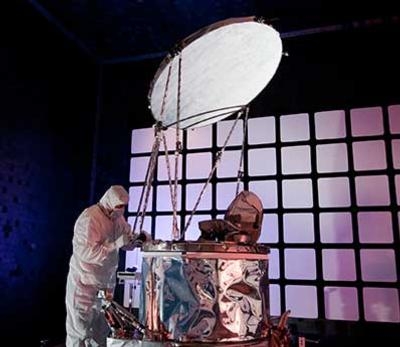A Matter of Ball’s
Friday, 07 April 2023 found Ball Aerospace—the improbable but highly-successful division of the famed home-canning powerhouse—celebrating the successful launch of its Tropospheric Emissions: Monitoring of Pollution (TEMPO) instrument aboard a commercial satellite blasted spaceward from Florida’s Cape Canaveral Space Force Station.

TEMPO is NASA's first Earth Venture instrument mission and will provide critical data pertaining to the Earth’s atmosphere—particularly types, concentrations, and movement of air pollution over the North American continent.
NASA’s Earth Venture endeavors are conducted under the auspices of the agency’s Science Mission Directorate/Earth Science Division, and comprise a series of low-cost missions conducive to the betterment of humankind’s understanding of the current state of the planet Earth and the improvement of humanity’s ability to predict future changes to the planet and its atmosphere, oceans, and myriad ecosystems.
TEMPO will provide hourly, high-resolution daytime measurements of key air pollutants as it scans the North American continent—coast to coast, from Mexico City to Alberta’s oil sands—thereby affording the scientific community a new tool by which to improve the accuracy and quality of air-quality forecasts.
Ball Aerospace vice-president Dr. Alberto Conti stated: "The TEMPO instrument is going to revolutionize the way scientists understand air-quality and pollution, and it will make a meaningful difference in the everyday lives of people who are sensitive to air pollutants. We're thrilled to be able to contribute this important piece of technology to the mission, which will help keep the public informed with vital health information and provide a robust dataset for additional research purposes."
The TEMPO instrument utilizes a geostationary ultraviolet/visible spectrometer to determine the concentration and hourly variations of atmospheric pollutants such as ozone and nitrogen dioxide. The improved spatial resolution and increased frequency of measurements occasioned by TEMPO stand to provide new insights into area sources of pollution, the manner in which pollutants move through Earth’s atmosphere, and the impacts of natural phenomenon the likes of volcanic eruptions.
The Ball-built TEMPO instrument was produced concomitantly with South Korea’s Geostationary Environment Monitoring Spectrometer (GEMS) instrument, which launched in 2020 and provides similar measurements to South Korea's National Institute of Environmental Research. As TEMPO monitors the North American continent so GEMS monitors Asia, providing daytime, hourly data from a geostationary equatorial orbit.
In addition to Ball Aerospace, the TEMPO team includes the Smithsonian Astrophysical Observatory and NASA's Langley Research Center. The instrument is integrated and hosted on Intelsat's Intelsat 40e satellite built by Maxar.
Ball Aerospace began building guidance controls for military rockets in 1956 and later won a contract to build the Orbiting Solar Observatory satellites—some of NASA's first spacecraft. The company has since undertaken and accomplished numerous technological and scientific objectives. In 2023, Ball Aerospace continues to provide aerospace technology to both governmental and private space-sector customers. In addition to space technologies, Ball Aerospace produces aviation and space industry lubricants, optical systems, and star trackers and antennas. A wholly-owned subsidiary of the Ball Corporation, Ball Aerospace, in 2022, was cited as the world’s 61st largest defense contractor.
Demand for Ball's innovative aerospace technologies continues to outpace supply thereof.
 NTSB Prelim: Piper PA-23
NTSB Prelim: Piper PA-23 ANN FAQ: Submit a News Story!
ANN FAQ: Submit a News Story! Classic Aero-TV: One Mans Vietnam
Classic Aero-TV: One Mans Vietnam ANN's Daily Aero-Linx (07.03.25)
ANN's Daily Aero-Linx (07.03.25) ANN's Daily Aero-Term (07.03.25): High Speed Taxiway
ANN's Daily Aero-Term (07.03.25): High Speed Taxiway



